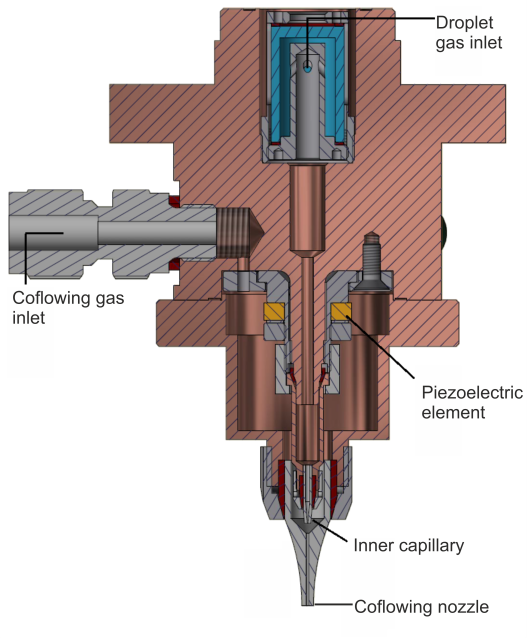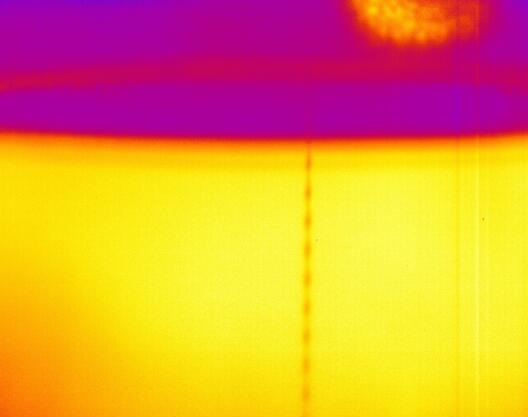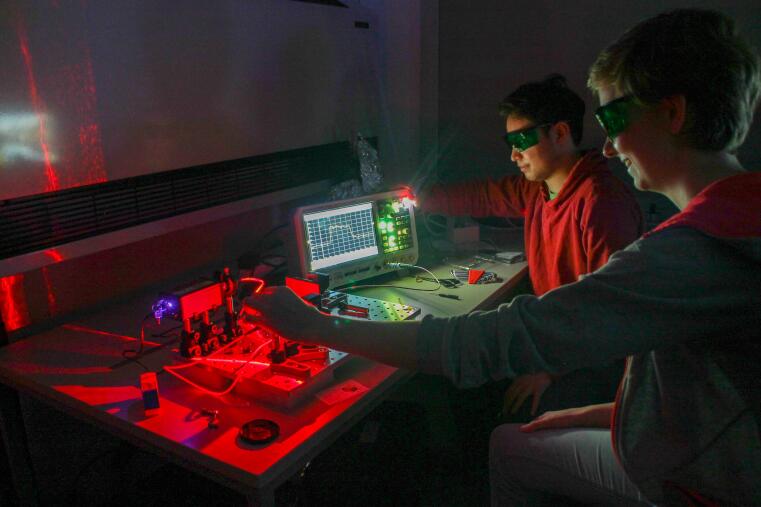The Droplet Target
Modern particle accelerator experiments such as the PANDA or MAGIX experiments make high demands on their applied targets. For example, the target thickness needs to be high to guarantee high interaction rates and the vertex point reconstruction has to be as precise as possible to minimise the physical background in the analyses. Another target, apart from the Münster cluster-jet target, which fulfils these exacting standards, is the droplet target, which is currently under development and construction by our group.


Like the Münster cluster-jet target, the droplet target will use hydrogen, specifically hydrogen droplets. For this purpose, hydrogen will be cooled down to around 20K and this fluid will be then pressed through a fine nozzle with a diameter of 10µm. This nozzle will be mechanically excited by a piezo element, which will support the natural break up process to create a steady stream of identical droplets. After their formation, the droplets will be injected into a vacuum of 10-2 - 10-3 mbar which will cause them to quickly freeze. However, should they freeze too swiftly, the break up process might be impeded, as the fluid beam freezes before having the chance to break up into droplets. For this reason, the nozzle is surrounded by a significantly larger one. Inside of this outer nozzle triple point conditions are maintained to prevent premature freezing.

While the target is still under construction, Bachelor, Master as well as PhD students have the opportunity to work on several important tasks in preparation of a smooth commissioning period of the droplet target. Such tasks are for example the preparation of target control software but also the construction and commissioning of a droplet monitoring system on the basis of an ultra-short pulse laser, which will allow for the analysis of individual droplets.
Once the target has finished construction, this device will be available for an exciting long-term research and development program, which will be performed not only in our institute, but possibly also at external particle accelerators or high-power laser systems.
